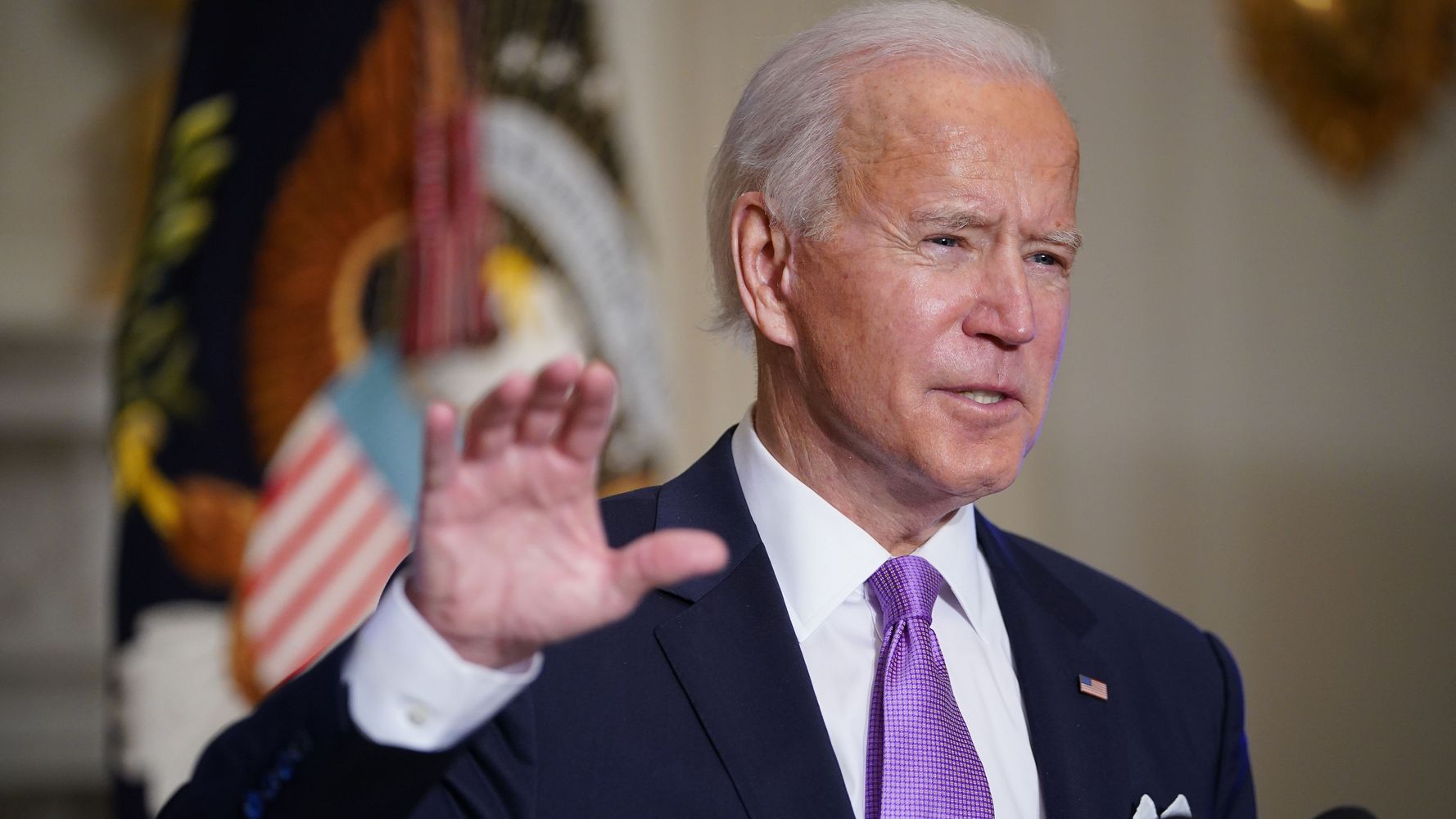[ad_1]

President Joe Biden on Thursday will set in motion a series of executive actions on health care, including one designed to boost health insurance enrollment through the Affordable Care Act and one designed to undo President Donald Trump’s attempts at undermining the law.
A separate presidential memorandum will seek to protect reproductive rights, yet again in an effort to reverse actions by the Trump administration ― most immediately by rescinding the “Mexico City rule,†which prohibits organizations abroad that receive U.S. funding from performing abortions or even providing information about them.Â
Biden plans to make the announcement, and sign the new directives, at a White House event early in the afternoon.
On health insurance, the most immediate and concrete move is the planned launch of a “special enrollment period†at HealthCare.gov, the federally run health exchange that serves 36 states.Â
Open enrollment at HealthCare.gov normally takes place for a short period of a few weeks, toward the end of each calendar year. But this year, Americans who need insurance will now have a new, three-month window for enrolling ― from Feb. 15 to May 15.Â
The move follows decisions by several states running their own exchanges to extend open enrollment or launch similar special enrollment periods. The logic of the state officials is the same that Biden officials are citing now: Guaranteeing access to health care is especially important with COVID-19 still spreading across the country.
“We’re in the middle of a global pandemic and we will make sure that people who want health insurance can get it,†a Biden White House official said.
Studies have shown millions of people who are eligible for subsidized coverage have not opted for coverage. (That includes people who have lost jobs and are automatically eligible to sign up for coverage through the exchanges, even without this new enrollment period.)
Biden officials say they hope to launch a new outreach effort, in the hope of encouraging these millions to sign up during the new enrollment period.Â
This alone represents a change from the Trump administration, which slashed funding both for advertising HealthCare.gov ― despite internal studies showing the ads boosted enrollment ― as well as nonprofit state and local groups that work to enroll individuals on a one-on-one basis.
Those cuts were just one of several ways the Trump administration, which spent its first year trying to repeal the legislation known as Obamacare, used its regulatory authority to change the Affordable Care Act.Â
Other Trump moves involved a variety of quiet technical changes (like adjusting formulas that affected the value of subsidies) and a loosening of rules on insurance policies (like propping up cheap “short-term/limited-duration†plans that lack the Affordable Care Act’s guarantees of coverage).
The Trump administration also encouraged states to alter their Medicaid programs, by adding “work requirements†that studies found repeatedly reduced enrollment by making it so much harder to sign up. Several federal courts have issued rulings blocking these efforts, but the Supreme Court has not yet weighed in.
Thursday’s executive order will instruct the Department of Health and Human Services to “re-examine†and “re-consider†these Trump administration actions ― which, almost certainly, will mean revising or rescinding many of them.
If that sounds like the process will take some time, that’s because it will: Rewriting old regulations, like writing new regulations, requires agencies to post newly proposed language, to collect public comments and, then, to review the feedback. Those steps can take months and sometimes years, depending on the complexity of the regulation and number of separate federal agencies involved.
At least one of the regulatory moves under consideration has nothing to do with Trump’s changes. It involves what has come to be known as the “family glitch†― a rule, first put in place by the Obama administration, that makes it difficult for family members of low-wage workers to find affordable insurance.
Although briefing material did not mention the family glitch specifically, the Biden White House official confirmed that was likely to be one of the policy moves HHS would consider in its review.
The efforts to bolster the Affordable Care Act and make it more widely available through executive action represent just the opening steps in Biden’s planned agenda on health insurance.Â
He has already proposed, as part of his COVID-19 relief agenda, making subsidies on the exchanges more generous and available to many more people. And during the presidential campaign, Biden called for creation of a “public option†― that is, a government-run insurance program that would compete alongside private insurers.
Those moves, unlike the ones Biden announced Thursday, would require acts of Congress.
Calling all HuffPost superfans!
Sign up for membership to become a founding member and help shape HuffPost’s next chapter
[ad_2]
Source link





